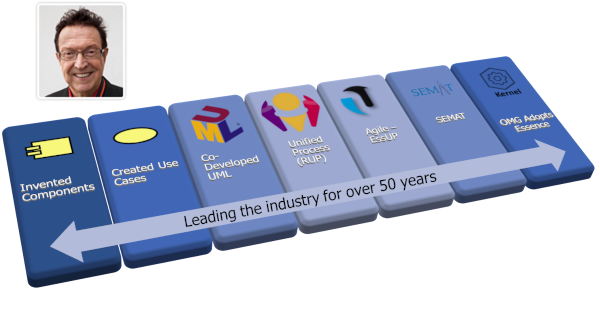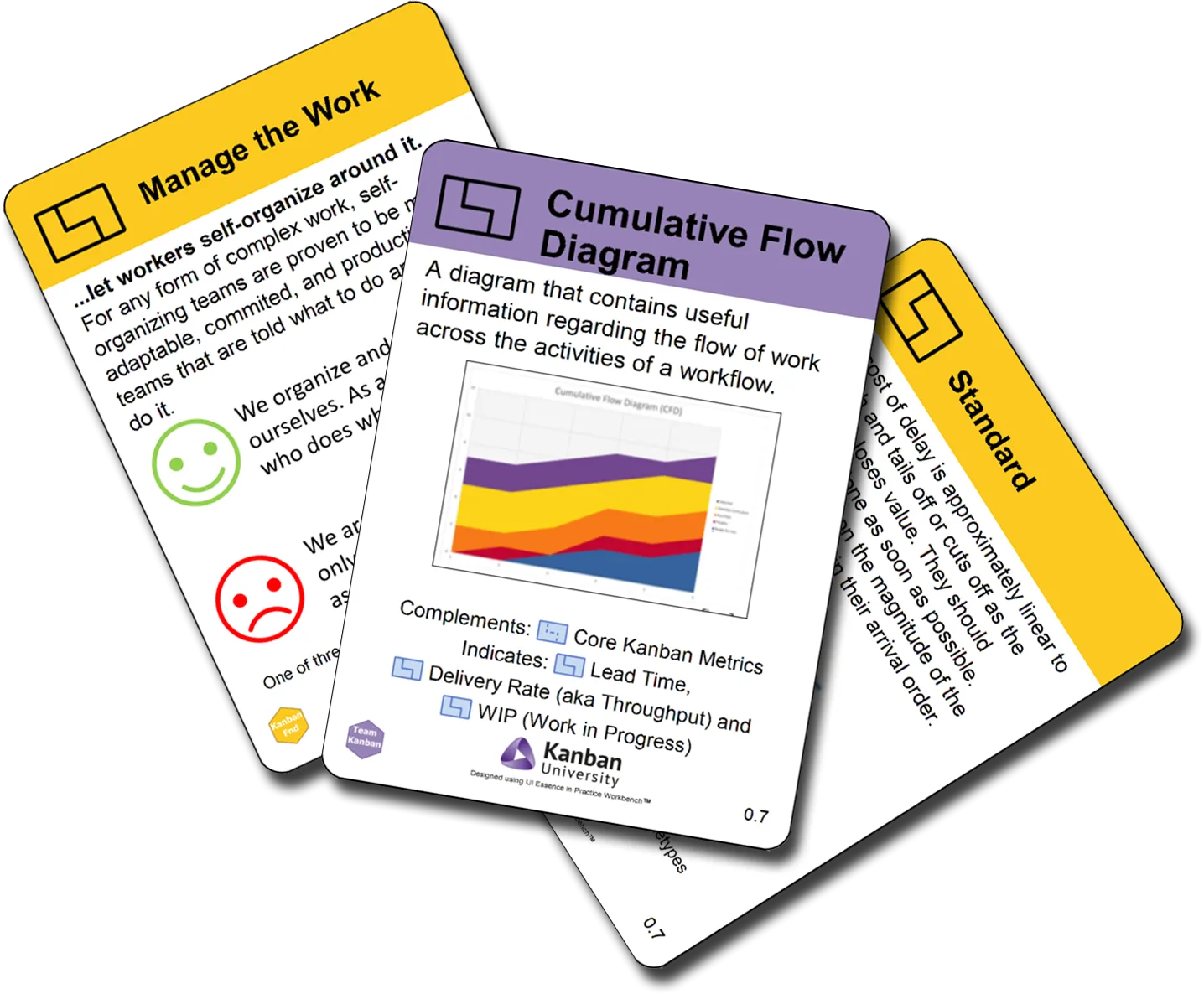Kanban is one of the most well known and popular approaches for managing work, with well over half the respondents in the 16th State of Agile survey using it, with a further quarter combining it with Scrum as ScrumBan.
What is Kanban?
Understanding Kanban
With such a large number of teams using Kanban, it is more important than ever that they understand it properly and are getting the best value from it.
Kanban University was founded in 2010 by David J Anderson and a group of trusted Kanban enthusiasts and is the ‘Home’ of The Kanban Method. Over the years the Kanban Method has evolved and improved, much as you would expect from an approach that values feedback loops and evolutionary change.
The entry point for many Kanban practitioners is The Kanban Guide, which describes the foundations and practical aspects of applying the Kanban Method to teams. As teams and organizations mature, the Kanban Maturity Model provides further guidance on how to apply the Kanban Method to higher levels of maturity and ultimately to ‘anti-fragile’ organizations build for long-term survival.

Where do we come in?
Ivar Jacobson International has partnered with Kanban University and David J Anderson to essentialize The Kanban Guide into two easy to use practices that complement the Kanban University resources. They are:
Kanban Foundations - The principles and general practices that underlie all Kanban implementations. It includes the 6 Kanban General Practices, the 3 Change Management Principles, 3 Service Delivery Principles, and the 4 Class of Service Archetypes.
Team Kanban Essentials - An actionable starting point for teams of knowledge workers who wish to use the Kanban Method to manage their work. It includes the essential activities to get you started and maintain the cadences that help you improve, plus the essential work products.

The Card Decks
The card decks are available to download below and will shortly be available to use in our Essence WorkBench™ (formerly TeamSpace) product.
The cards can be used to play numerous serious games and also as a handy reference for teams adopting Kanban.
Download the Kanban Card decks now:
To get started with them, why not try one of these simple games:

Game 1: Improve Your Retro with Kanban
Goal: Use the Kanban Foundations practice to help your team find new and different ways to action improvements identified in your retrospectives.
Step 1: Start with the set of potential improvements your team has identified. Make sure they are all things that your team is empowered to make changes to.
Step 2: Select which Kanban Foundation cards to play with. You could just play with the General Practices cards, or include one or both sets of principles.
Step 3: Deal the cards out amongst the team.
Step 4 (optional): If this is the first time the team have seen the cards, spend a little time talking about each of them as a team. Think about what the cards mean, and whether it is something your team naturally does or not. The ‘Values Mapping’ game can help with this step.
Step 5: Choose an improvement to start with (you may want to prioritize your improvements first). Taking it in turns, each team member uses the Kanban cards they are holding as a prompt to suggest a way the team could address the improvement. After the team member has made their suggestion, the rest of the team can make additional suggestions based on that card. Capture all the suggestions on sticky notes. Play moves to the next team member and repeats.
Step 6: Take the suggestions and group them and form them into several options to consider. You may want to rewrite or add to them. For each option, decide whether it is an Action for the someone to do or an Experiment to try and evaluate the results.
Step 7: Decide 1-3 experiments and/or actions to commit to doing.
Step 8: Repeat for the other potential improvements.
Game 2: Value Mapping
This is a simple but powerful game that helps teams understand and evaluate a set of values, principles of core beliefs. It is a good way to prioritize values for further attention or improvement, and as a pre-cursor to other games such as Practice Spotlight.
Goal: Understand values that are important to the team and evaluate how well the team applies them.
Step 1: Select which cards to play with. These could be practice values (such as Kanban General Practices, Scrum Values, SAFe Principles, etc), organization values or more generic values (such as the Agile Manifesto values or professional codes of conduct).
Step 2: Prepare a playing surface that is wide enough to play all your cards. Label the Y-Axis with a scale such as ‘We apply this value all the time’ to ‘We rarely apply this value’. You can customize the axis as you wish.
Step 3: Place each value card on the board in line with where you think it belongs on the scale.
Step 4: Analyze your board and decide actions.
Options:
Consider using facilitation techniques that will encourage your team to be honest about where each value belongs. For example, anonymization, simultaneous voting, privacy. Take it in turns to lead the discussion.
Rather than agree a position, you could position the card at the bottom and use dots or sticky notes to show the range of votes.
Boost credibility for by proposing evidence that supports the position of each value.
Specialize to a particular activity or aspect of your practice (eg Retrospective)
Game 3: Simple Practice Retrospective
In this game, the team focusses their retrospective on how they apply their practice.
Goal: Identify potential improvements to the practice(s) the team uses.
Step 1: Select which cards to play with. Choose which practices to inspect, and choose which elements of each. Shuffle the cards.
Step 2: Create a playing board with three areas arranged vertically. Label them: “We do this really well”, “We are OK at this but can improve”, “We are not great at this”, and “We rarely do this”.
Step 3: Take it in turns to draw a card and place it in the category you think it belongs. Team thumb votes on whether they agree. (thumb up – higher, etc). Decide as a team where the card should go.
Step 4: Consider the cards in the lowest category. Brainstorm potential experiments or actions you could take to improve your application of them. Vote on 1-3 experiments or actions to commit to doing.
Options:
This game works well with a practice patience 3x3 matrix.
Test your understanding of the practice(s) by playing with tokens (not full cards) and the categories “I can explain this without reading the card”, “I think I know what this is”, “I don’t know this very well”. Take it in turns to try to explain the practice element and test your answers with the full cards.
Upcoming Training
No courses available for your selection